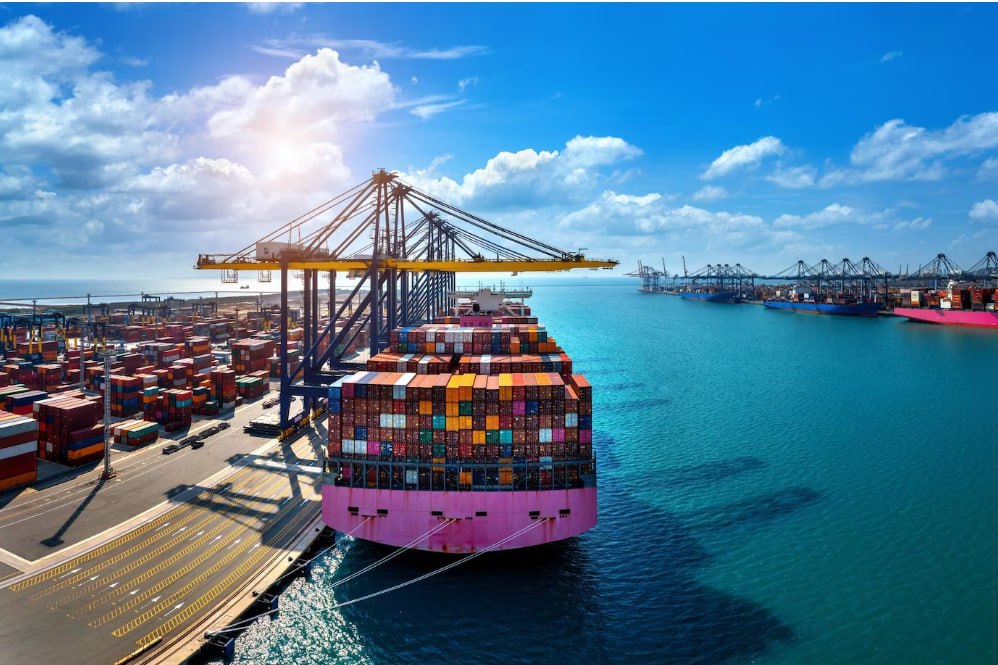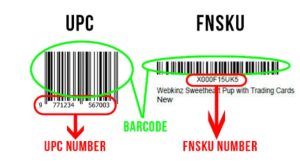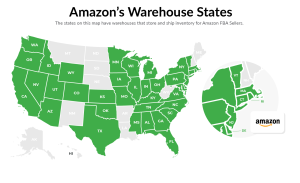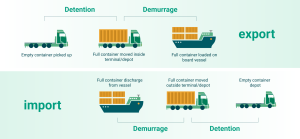WAREHOUSE OPERATION PROCESS
Shipping requirements:
Packaging your shipment correctly is crucial to making sure your inventory is optimized for entry into warehouse.
The following requirements apply to all boxes shipped to PETANI warehouses whether by small parcel delivery (SPD), less than truckload (LTL), or full truckload (FTL) shipping.
1. Packing list is required before sending the product to the warehouse.
If packing list is not provided and delivery is not confirmed, your shipment can be rejected by warehouse.
2. Box and pallet requirements.
Boxes must not exceed these maximum size and weight requirements: no more than 25.00 inches on any side and no more than 40.00 lb total.
Single pallets must be no higher than 60 inches. Total weight of the pallet must not exceed 1,500 lb. 3-SKU limit per pallets.
3. WRO Labels are required.
WRO Labels are inbound labels that must be attached to your cartons and pallets when sending inventory to warehouse.
WRO Labels helps us identify who the shipment belongs to and the contents of shipment.
If WRO Labels are not attached, additional shipment identification charges will apply and your shipment will take longer to receiving at our warehouse.
Important: Making sure that your labels can be scanned quickly and easily. We also recommend that you periodically test your barcodes by scanning them.
4. Tracking numbers or any other carrier information is required before SPD and LTL delivery (notify warehouse manager in 1-2 weeks, but no later than 5 working days before delivery).
If delivery period is not provided, your shipment will take longer to receiving at our warehouse or can be rejected.
Keep in mind that we will not be responsible for any discrepancies in counts of receiving cartons. You need to control your shipments by yourself and contact your freight forwarder in time to start an investigation and find your lost cartons.
5. Appointment for FCL / FTL / LTL is required.
SUGGESTIONS TO THE EXPORTER FOR FASTER CLEARANCE OF YOUR MERCHANDISE
- Include all information required on your customs invoices.
- Prepare your invoices carefully. Type them clearly. Allow sufficient space between lines. Keep the data within each column.
- Make sure that your invoices contain the information that would be shown on a well-prepared packing list.
- Mark and number each package so it can be identified with the corresponding marks and numbers appearing on your invoice.
- Show a detailed description on your invoice of each item of merchandise contained in each individual package.
- Mark your goods legibly and conspicuously with the country of origin unless they are specifically exempted from country-of-origin marking requirements, and with such other marking as is required by the marking laws of the United States.
- Comply with the provisions of any special laws of the United States that may apply to your goods, such as laws relating to food, drugs, cosmetics, alcoholic beverages, radioactive materials, and others.
- Establish sound security procedures at your facility and while transporting your goods for shipment. Do not give narcotics smugglers the opportunity to introduce narcotics into your shipment.
- Consider shipping on a carrier participating in the Automated Manifest System (AMS).
NOTE: In addition to contacting CBP, importers should contact other agencies when questions arise about particular commodities. For example, questions about products regulated by the Food and Drug Administration should be forwarded to the nearest FDA district office or to the Import Division, FDA Headquarters. The same is true for alcohol, tobacco, firearms, wildlife products (furs, skins, shells), motor vehicles, and other products and merchandise regulated by the other federal agencies for which CBP enforces entry laws.
EXAMINATION OF GOODS AND ENTRY DOCUMENTS
Examination of goods and documents is necessary to determine, among other things:
- The value of the goods for customs purposes and their dutiable status,
- Whether the goods must be marked with their country of origin or require special marking or labeling. If so, whether they are marked in the manner required,
- Whether the shipment contains prohibited articles,
- Whether the goods are correctly invoiced,
- Whether the goods are in excess of the invoiced quantities or a shortage exists,
- Whether the shipment contains illegal narcotics.
Prior to the goods’ release, the port director will designate representative quantities for examination by CBP officers under conditions that will safeguard the goods. Some kinds of goods must be examined to determine whether they meet special requirements of the law. For example, food and beverages unfit for human consumption would not meet the requirements of the Food and Drug Administration.
One of the primary methods of smuggling narcotics into the United States is in cargo shipments. Drug smugglers will place narcotics inside a legitimate cargo shipment or container to be retrieved upon arrival in the United States. Because smugglers use any means possible to hide narcotics, all aspects of the shipment are examined, including containers, pallets, boxes, and products. Only through intensive inspection can narcotics be discovered.
Textiles and textile products are considered trade-sensitive and as such may be subject to a higher percentage of examinations than other commodities.
CBP officers will ascertain the quantity of goods imported, making allowances for shortages under specified conditions and assessing duty on any excess. The invoice may state the quantities in the weights and measures of the country from which the goods are shipped or in the weights and measures of the United States, but the entry must state the quantities in metric terms.
Who May Import?
An owner or purchaser of merchandise is allowed to import and file an entry with US Customs. They are also known as the “importer of record”. This includes anyone with an economic interest, with permission to act as the importer of record. Foreign companies and/or individuals may also enter goods and be importers of record, by going through an authorized agent in the US.
DOCUMENTS REQUIRED FROM IMPORTERS BY A CUSTOMS BROKER
1. Power of Attorney (and Terms and Conditions)
Also known as Customs Form 5291. Establishing a POA is necessary for the process of Importing into the US. This document establishes the right to make an entry by a customs broker on behalf of the importer. A blank POA will be provided upon the first booking.
2. Customs Surety Bond
A customs surety bond is a contract used for guaranteeing that a specific obligation will be fulfilled between customs and an importer for any given import transaction. The main purpose of a customs bond is to ensure that the payment of import duties, taxes and fees owed to the federal government will be paid.
If you are importing merchandise into the United States, (U.S.) for commercial purposes, that is valued over
$2,500, or a commodity subject to other federal agencies’ requirements (i.e. firearms or food), you must post a Customs bond. You should submit a bond application form to a customs broker in order for them to issue the bond.
You have the option of obtaining a “single entry” or “continuous bond”. The type of bond you elect to obtain ultimately depends on how often you import into the U.S. For instance, if you only import on occasion, the single-entry bond is recommended. Note that single-entry bonds are only good for up to 5 shipments within a year. You will also be required to elect for an ISF bond, along with the single-entry bond for ocean shipments. If you import frequently and through various ports of entry, the continuous bond is beneficial and economically the best choice. This is a yearly subscription and renewal.
A continuous bond is 10% of duties, taxes and fees paid for the 12-month period. The minimum amount is
$50,000.00. Current bond formulas can be found at www.CBP.gov
A single-entry bond is generally in an amount not less than the total entered value, plus any duties, taxes and fees. The minimum amount for a single transaction bond is $100.00.
PETANI Logistics can help and work as your agent to apply for the bond on your behalf.
AMAZON SELLERS
For Amazon sellers looking to request for quotation, it is very important to note that you must have a supplier, goods chosen and ready for production, along with the complete details of your shipment such as:
- Origin Pick-up
- Final Destination
- # of pieces/cartons (Supplier can advise)
- Dimensions of each carton (Supplier can advise)
- Weight per carton (Supplier can advise)
- HTS code
- Picture of products
- Terms of Sale / Incoterms (i.e. FOB, EXW)
- Mode of Transport – Air or Ocean
** Having all of this information available before requesting a quote from your freight forwarder will help the experts provide more accurate pricing**
What is an HTS Code?
All merchandisers coming into the US are statistically categorized. Each item will have its own applicable tariff rates. It is very important to know that your customs broker or freight forwarder cannot delegate or assign an HTS code to use for your shipment. Typically, your supplier provides the HTS code for your product.
As an importer, you must be in agreeance with the code that is being used, as this will dictate the duty rate applicable for your shipment, which you are ultimately responsible for. Your customs broker may only suggest and help provide binding rulings associated with your HTS code.
I AM ACCEPTING THE QUOTE. WHAT HAPPENS NEXT?
- If the quote you received from PETANI Logistics, satisfies your needs and you are willing to accept, all customs forms such as POA, shipping contract, commercial invoice and packing list, certificate of origin, USDA certification, documents for Duty Benefits, test report, SLI, service agreement must be executed and sent back to your agent.
- If you are applying for a continuous bond, the bond application must also be filled out and sent back to your agent.
- PETANI Logistics will then liaise with their agent overseas to contact your shipper to begin the booking arrangements.
- Sit back, relax, and wait for the shipment to arrive. Your forwarding agent will contact you via email or phone with updates, as the movement of your shipment progresses.
- Your final invoice should come before the freight arrives or becomes available at the final port of destination.
- Payment must be secured as soon as possible, after receipt of the final invoice, to help ensure timely customs and freight release.





